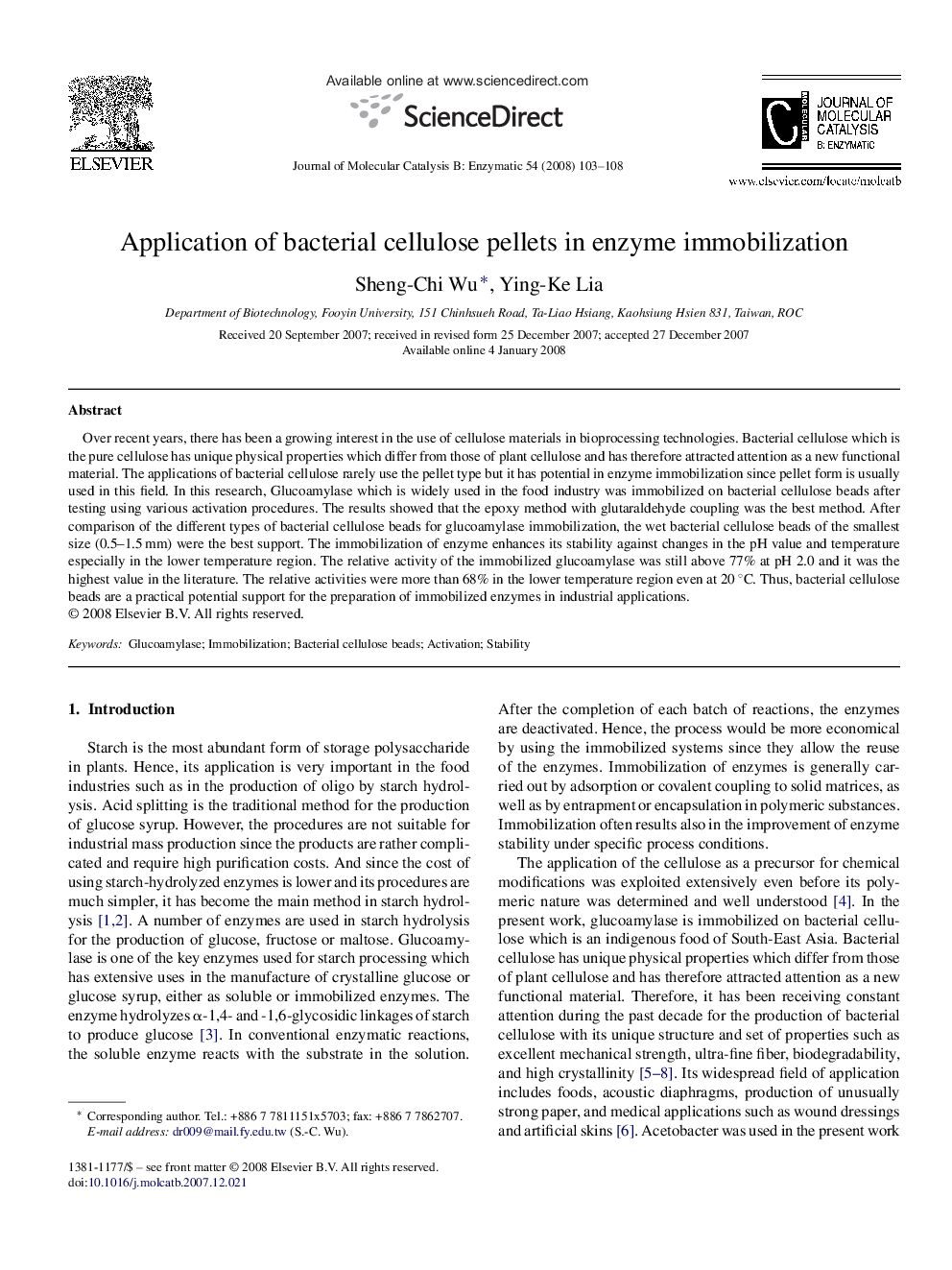| Article ID | Journal | Published Year | Pages | File Type |
|---|---|---|---|---|
| 70976 | Journal of Molecular Catalysis B: Enzymatic | 2008 | 6 Pages |
Over recent years, there has been a growing interest in the use of cellulose materials in bioprocessing technologies. Bacterial cellulose which is the pure cellulose has unique physical properties which differ from those of plant cellulose and has therefore attracted attention as a new functional material. The applications of bacterial cellulose rarely use the pellet type but it has potential in enzyme immobilization since pellet form is usually used in this field. In this research, Glucoamylase which is widely used in the food industry was immobilized on bacterial cellulose beads after testing using various activation procedures. The results showed that the epoxy method with glutaraldehyde coupling was the best method. After comparison of the different types of bacterial cellulose beads for glucoamylase immobilization, the wet bacterial cellulose beads of the smallest size (0.5–1.5 mm) were the best support. The immobilization of enzyme enhances its stability against changes in the pH value and temperature especially in the lower temperature region. The relative activity of the immobilized glucoamylase was still above 77% at pH 2.0 and it was the highest value in the literature. The relative activities were more than 68% in the lower temperature region even at 20 °C. Thus, bacterial cellulose beads are a practical potential support for the preparation of immobilized enzymes in industrial applications.
